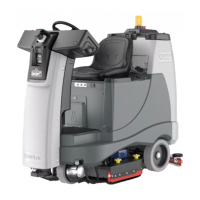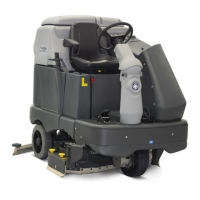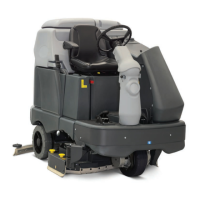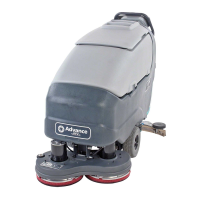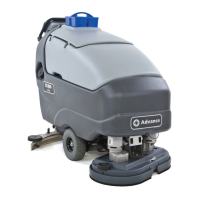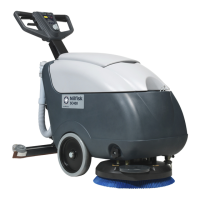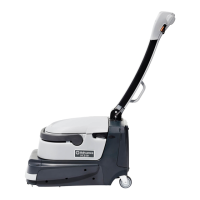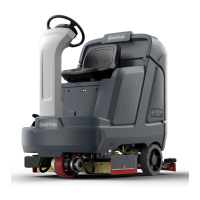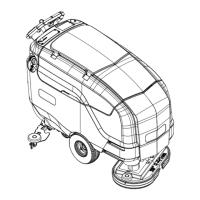129Service Manual – SC6000 40 - Recovery System
Vacuum Suction Test
Use this procedure to verify that the vacuum system is performing within factory specications. This
procedure can also be used to isolate the cause of a vacuum problem between a clog or leak. It is a two-part
procedure that veries both static pressure and ow rate. This procedure requires a vacuum gauge (PN
56205281), a piece of 2" PVC (or similar) tube, a 1" hole saw, and some duct tape (or similar, for a seal).
1. Remove the suction hose (A) from the squeegee
and then turn on the vacuum.
2. Place the vacuum gauge (B) on the hose so the
taper (C) seals against the end of the hose.
3. Record the vacuum pressure reading from the
gauge. This is the static pressure.
4. Turn the vacuum off while constructing and
tting the PVC restricter tube (D).
5. Cut a piece of 2" PVC approximately 6" long, and
clean off the burs. The outer diameter of the tube
should be close to, but not larger than 2½".
6. Drill a 1" hole (E) approximately in the middle of
the PVC tube, and clean off the burs.
7. As necessary, wrap duct tape around the tube so
it ts snugly in the end of the end of the suction
hose with no leaks.
8. Turn the vacuum on and place the vacuum gauge
on the restricter tube.
9. Record the vacuum pressure reading from the
gauge. This is the restricted ow pressure.
Results Summary
The rst part of this procedure determined the static pressure of the vacuum system, and the second part
determined the ow rate (by calculation). The ow rate through a restriction is determined by the pressure
differential across the restriction. These two parameters may be used to determine if the vacuum system is
functioning properly, and may also be used to isolate a possible cause for a problem.
• If the static pressure is at least 57 inches H
2
O, then the vacuum motor(s) are functioning properly and
there are no signicant leaks in the system.
• If the 1” restricted ow pressure is at least 20 inches H
2
O, then there are no signicant clogs in the
system.
• If both parameters are below specications, then one or both vacuum motors may be failing, or there may
be a signicant leak in the system.
B
C
A
D
E
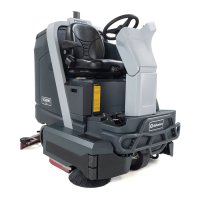
